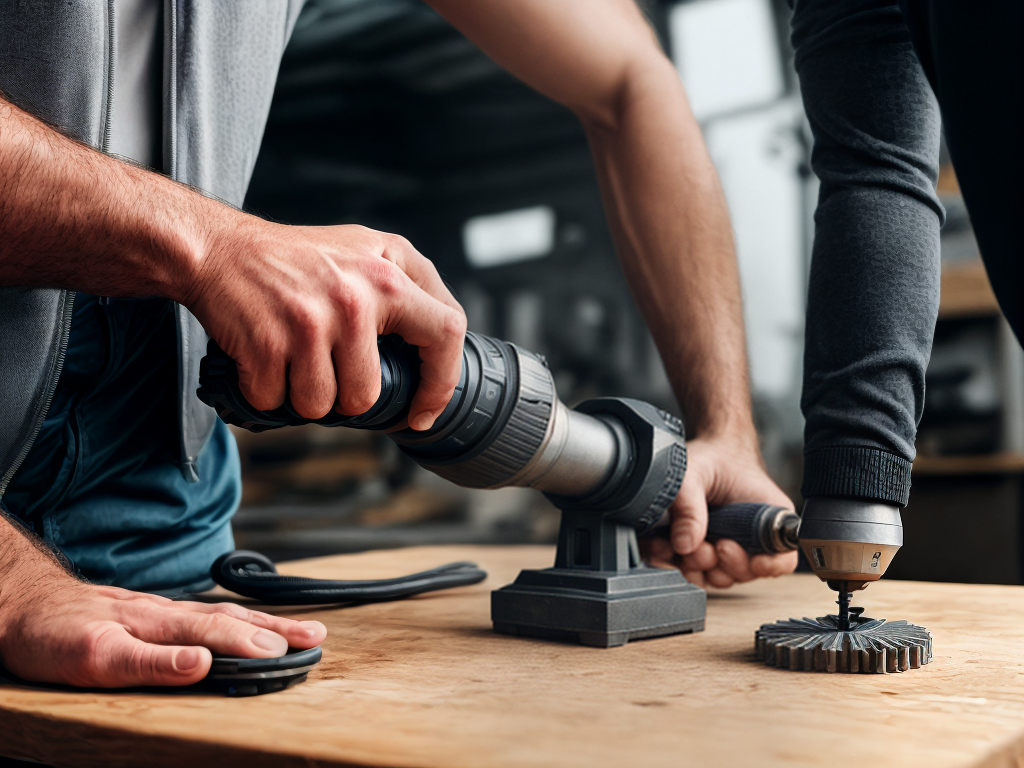
As an aspiring master of drilling, I invite you to embark on a journey to unlock the secrets of this art. Just like a sculptor with a chisel, a skilled driller uses their tools to shape and create with precision. In this guide, I will share with you the tips and tricks that will elevate your drilling skills to new heights. From choosing the perfect drill bit to mastering the proper technique and speed, we will delve into the intricacies of this craft. Safety precautions and troubleshooting common drilling problems will also be explored, ensuring your mastery is accompanied by a keen awareness of your surroundings. Get ready to become a true drilling expert!
Choosing the Right Drill Bit
To ensure successful drilling, it is crucial to select the appropriate drill bit for the task at hand. Choosing the right drill bit involves considering two key factors: drill bit materials and drill bit size selection. When it comes to materials, drill bits are typically made from high-speed steel (HSS), cobalt, carbide, or diamond. Each material offers different advantages and is suited for specific applications. For example, HSS drill bits are versatile and can handle a wide range of materials, while cobalt drill bits are more durable and excel in drilling hard metals. Additionally, carbide drill bits are ideal for masonry and concrete, while diamond drill bits are specifically designed for drilling through hard materials like glass and porcelain.
In addition to material selection, drill bit size is another crucial consideration. The size of the drill bit is determined by its diameter, which is typically measured in inches or millimeters. Selecting the right size is essential for achieving the desired hole diameter and preventing damage to the workpiece. It’s important to match the drill bit size to the size of the hole you want to create. Using a larger drill bit may result in an oversized hole, while using a smaller drill bit might require additional drilling or cause the bit to break. By carefully considering the drill bit materials and size selection, you can ensure precision and efficiency in your drilling projects.
Proper Drill Speed and Technique
Now let’s delve into the importance of mastering proper drill speed and technique. When it comes to drilling, achieving optimal drilling depth and maintaining drill bit sharpness are crucial for successful outcomes. Here are some key tips to keep in mind:
- Adjust the drill speed according to the material you’re working with. Slow speed is ideal for hard materials, while high speed works best for softer ones.
- Apply consistent pressure while drilling to avoid overheating and ensure a smooth operation.
- Use a steady hand and maintain a perpendicular angle to prevent the drill bit from wandering off track.
- Regularly check and sharpen your drill bits to maintain their cutting efficiency.
- Remember to periodically clear away debris to prevent heat buildup and improve drilling accuracy.
Essential Safety Precautions
When working with drills, it is essential to prioritize safety by following proper precautions. As someone who desires mastery in the art of drilling, it is crucial to understand the importance of drill maintenance and wearing protective gear. Regular maintenance ensures that your drill is in good working condition, reducing the risk of accidents. This includes cleaning the drill, checking for loose or damaged parts, and lubricating moving components. Additionally, wearing protective gear such as safety goggles, gloves, and earplugs is vital to protect yourself from flying debris, potential hand injuries, and excessive noise. Investing in high-quality protective gear will provide you with the necessary protection while drilling, allowing you to focus on honing your skills and achieving mastery in this craft.
Understanding Different Drill Types
As a beginner in the art of drilling, my understanding of different drill types is essential for mastering this craft and ensuring the safety of my equipment. Here are some key points to consider:
- Drill maintenance: Regularly clean and lubricate your drill to prolong its lifespan and ensure optimal performance.
- Drilling through different materials: Different materials require different drill bits. Research and choose the appropriate bit for the material you are drilling into to avoid damage or ineffective drilling.
- Corded vs. cordless drills: Consider the advantages and disadvantages of each type, such as power output and portability, to determine which one suits your needs best.
- Hammer drills: These drills provide a hammering motion along with rotational force, making them ideal for drilling into hard materials like concrete or masonry.
- Impact drivers: Designed for driving screws and fasteners, impact drivers deliver high torque and are more compact than traditional drills.
Understanding the different drill types will not only enhance your drilling efficiency but also ensure the longevity of your equipment.
Troubleshooting Common Drilling Problems
After understanding different drill types, I encountered several common drilling problems that required troubleshooting. One of the most important aspects of maintaining a drill is regular drill maintenance. This includes cleaning the drill bits, lubricating moving parts, and checking for any signs of wear and tear. By keeping your drill in top condition, you can maximize drilling efficiency and prevent common problems. Another common issue that arises is drill bits getting stuck in the material being drilled. This can be solved by using the correct drill bit for the material, applying consistent pressure, and periodically removing the bit to clear any debris. Lastly, overheating is a common problem that can be avoided by using the correct drilling technique and taking breaks to allow the drill to cool down.
| Common Drilling Problem | Solution |
|---|---|
| Stuck drill bits | Use correct drill bit for material, apply consistent pressure, remove bit to clear debris periodically |
| Overheating | Use correct drilling technique, take breaks to allow drill to cool down |


























